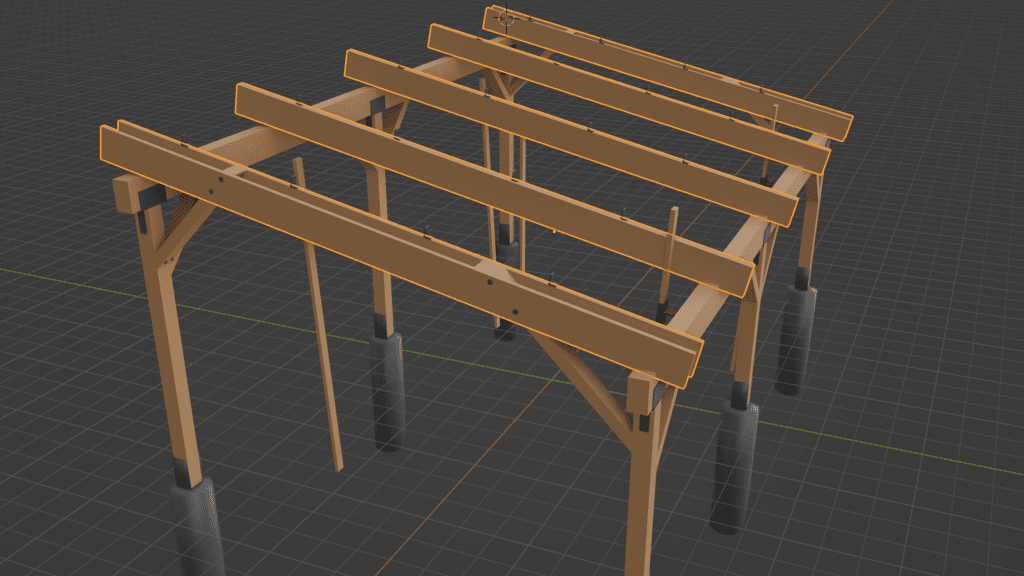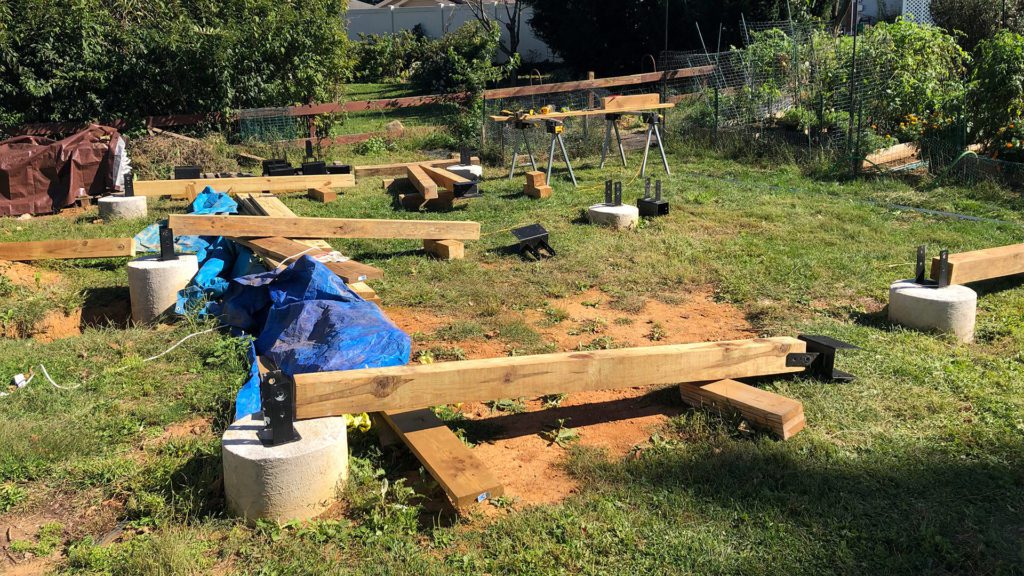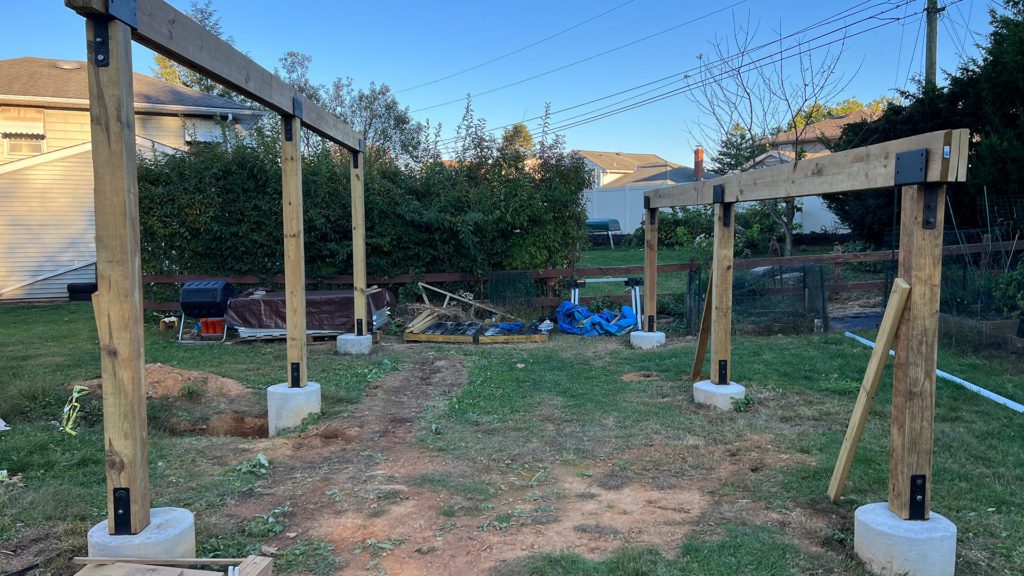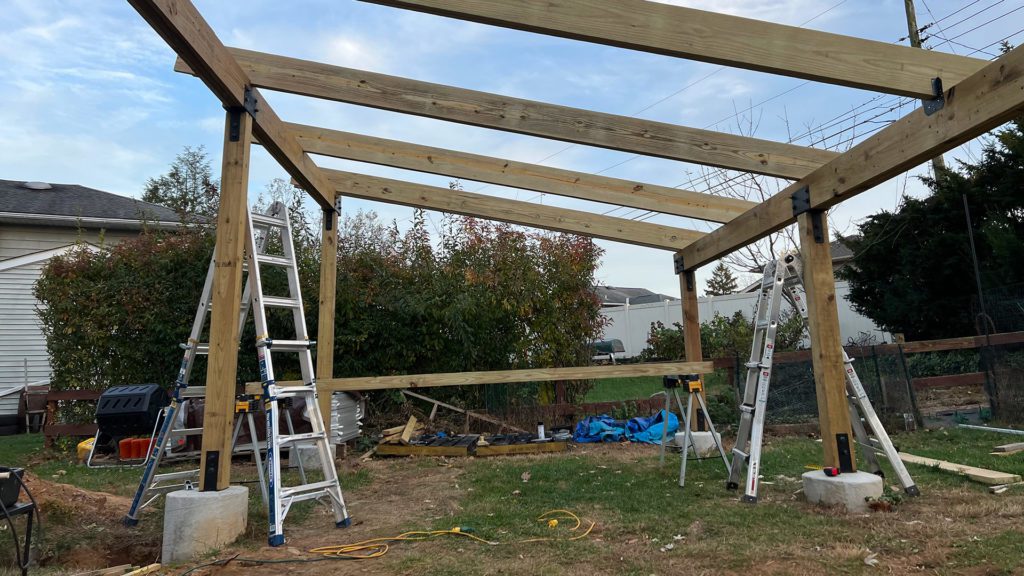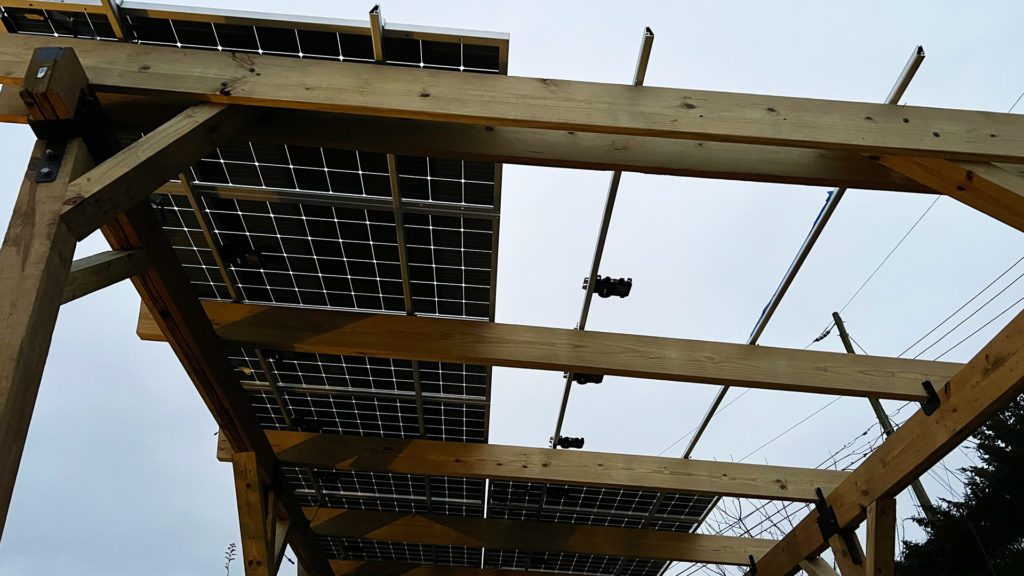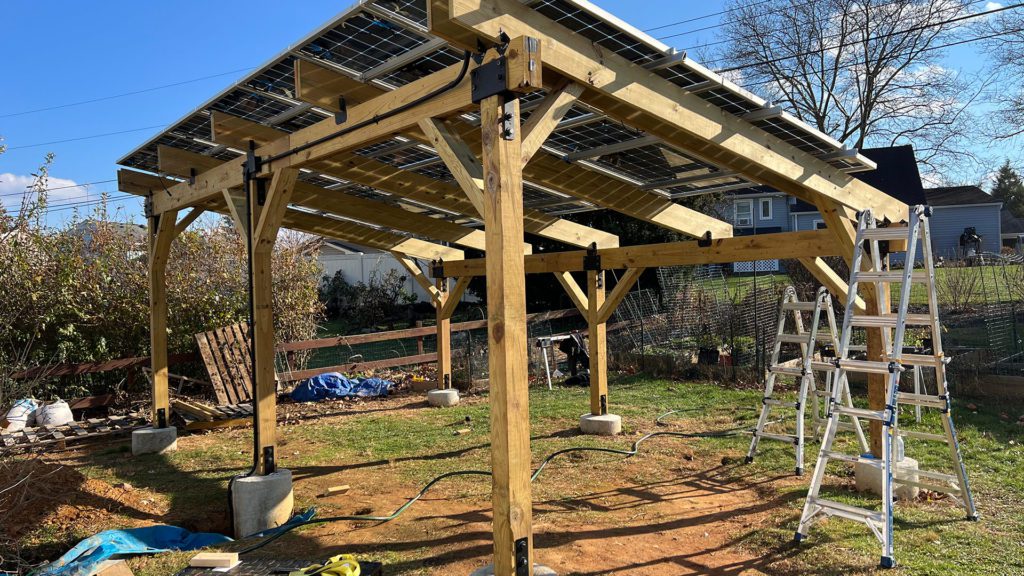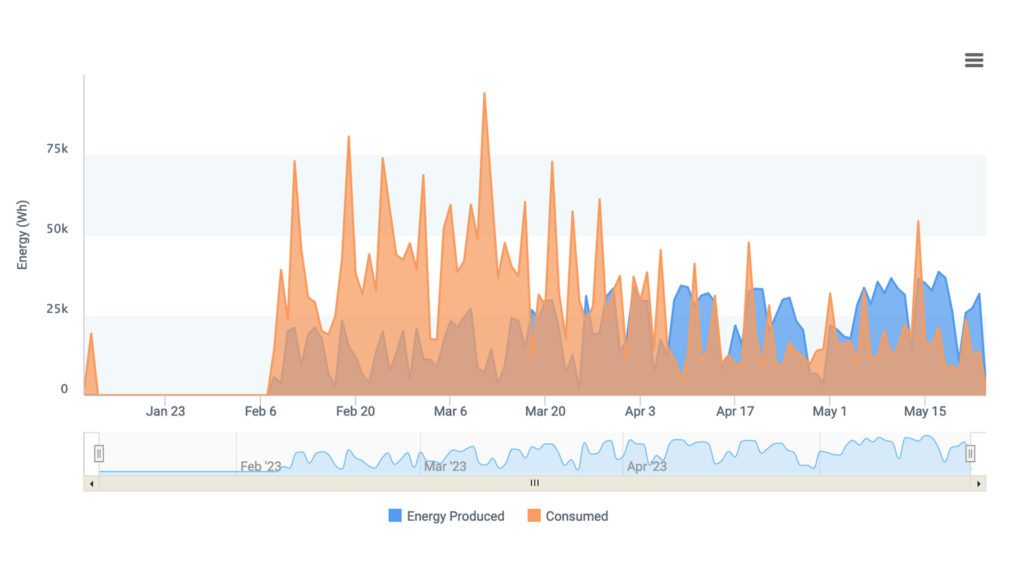How to Build a Solar Pergola
A quick, off the cuff, breakdown of a solar pergola build. Later this will be replaced with a proper “how-to” and/or “if-you-should.”
Plan
The planning phase is mostly about learning the rules and regulations of an area and the inspectors involved. Many inspectors are open to questions and will help identify the most important areas that will be focused on. Even if a “wet stamp” on the structure isn’t needed (it probably will be) it’s good to get a review from a structural engineer. Budget the materials, contact vendors, and order any materials that may have variable stock or changing prices.
Set Footings
Building usually starts below ground, unless the local environment is very forgiving, with deep footings to provide wind and weight resistance.
Post and Beam
Construction should be solved in planning. Screw and bolt sizes, overhangs, and any other details should be thought through so the structure rises pretty quickly. Beams at this scale are massive and need extra hands, even built up, to get lifted.
Rafters, Braces, and Rails
Rafters and braces are the most difficult to cut but can be machined off a template to speed up sawing. Rafters are the next heaviest, after beams, structural pieces but with some care also fit into place fairly quickly. Rails are light and easy to move but do need extra care to avoid having crooked panels.
Panels
Almost last, panels are awkward to lift so find a way to slowly bring them up under control. A lift seems like a good idea but any wind will make lifting much more dramatic. It’s much better to slide the panels up under firm control.
Wiring
The least amount of lifting but the most potential for fires, dramatic failures, and other instantaneous unwanted discoveries. Solar wiring isn’t normally complex but needs a firm understanding of the basics. Enphase AC wiring makes DIYing a little easier.
Paperwork
Inspections, SRECS, power company interfacing (interconnection) are all a series of appointments and emails but most people and places have a reason to be prompt with replies and going DIY gives you more visibility over the process.
